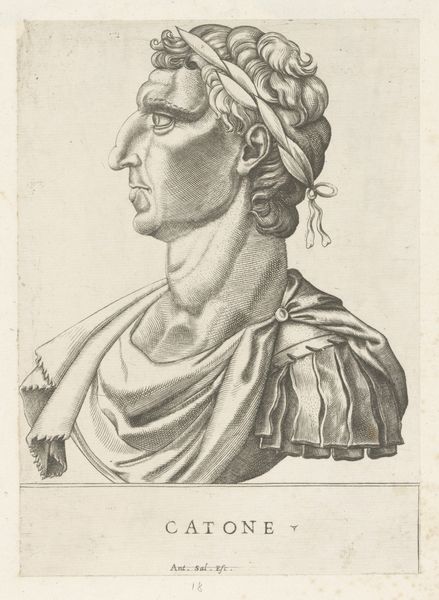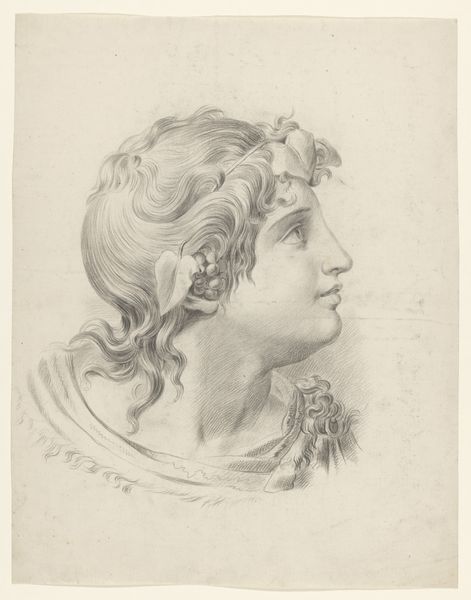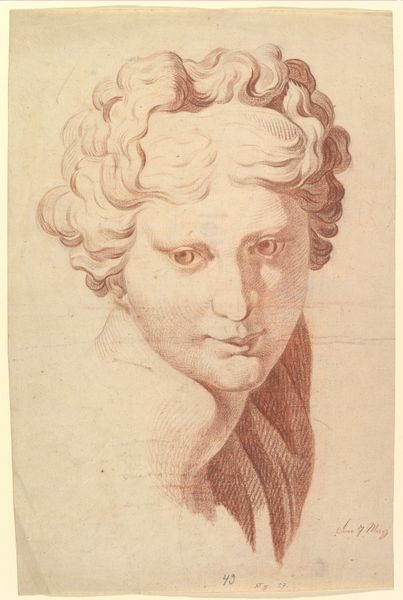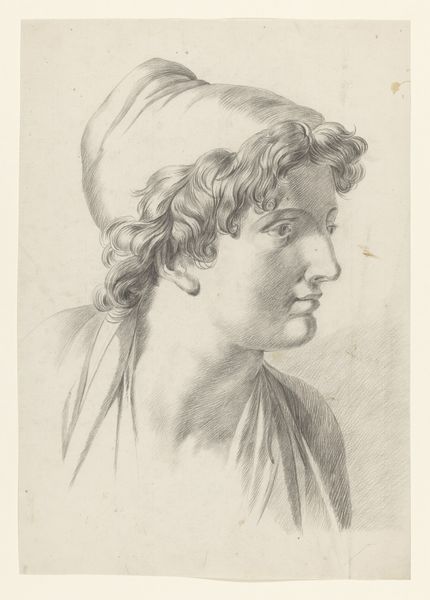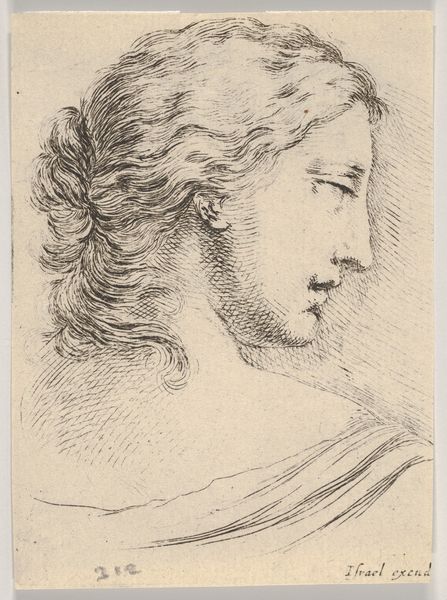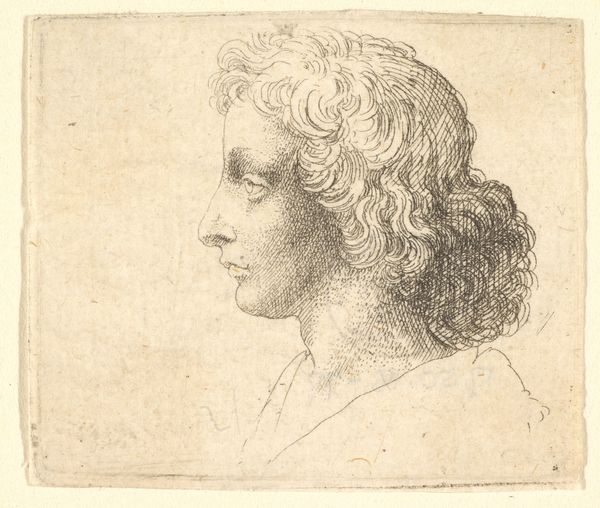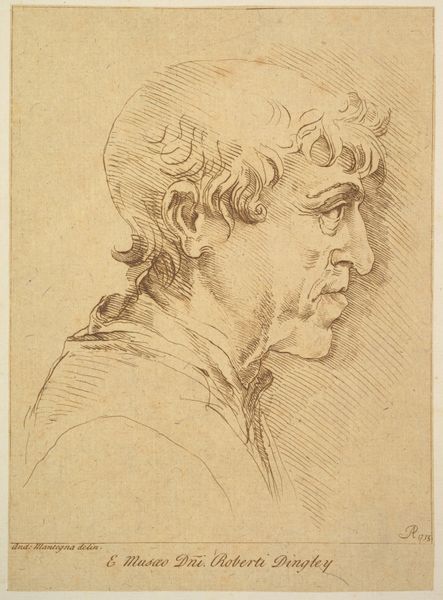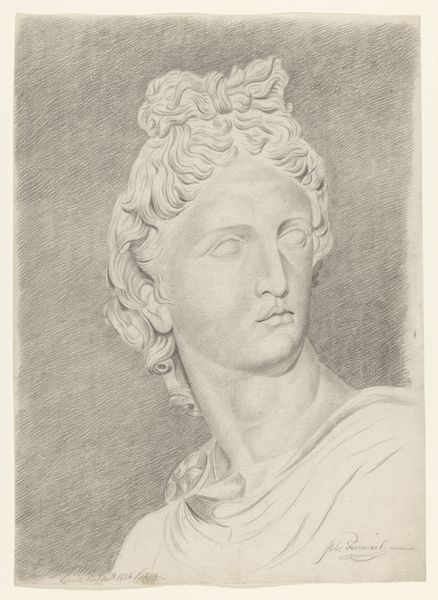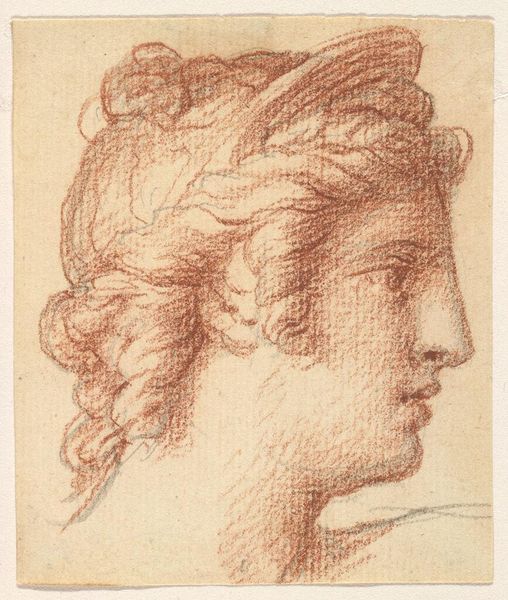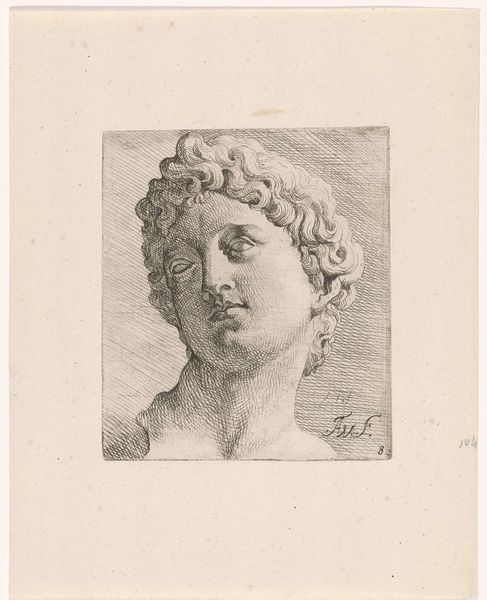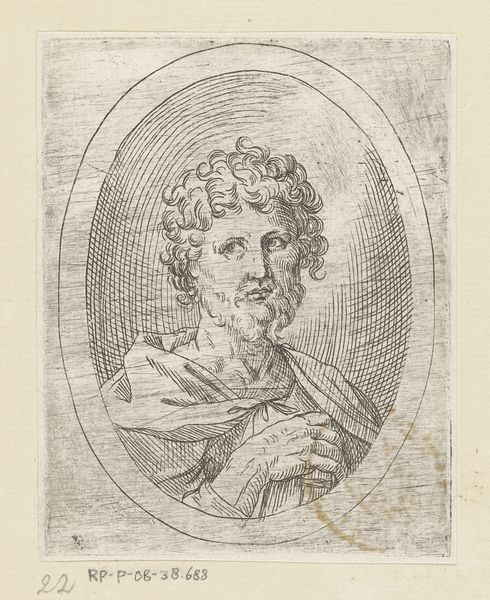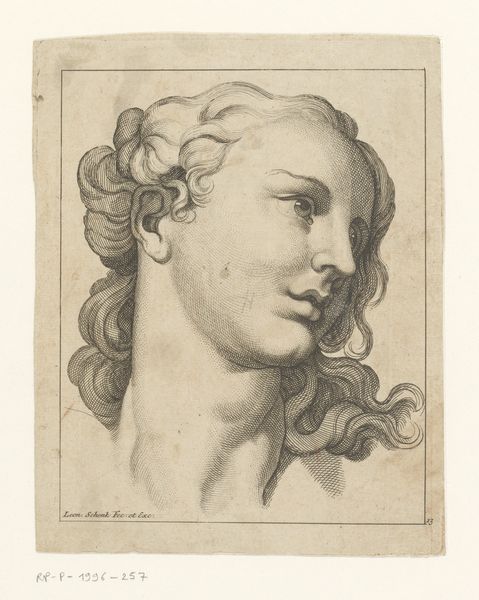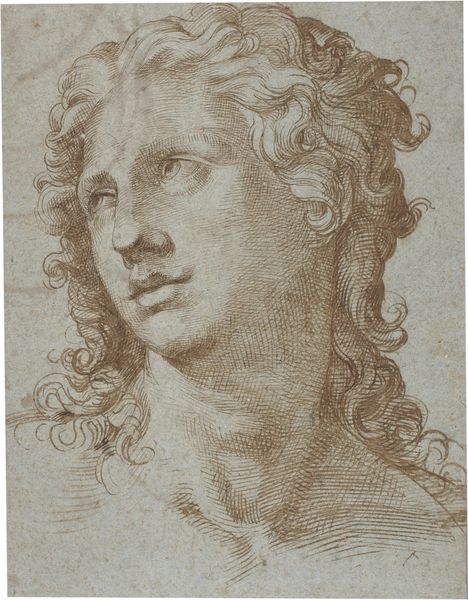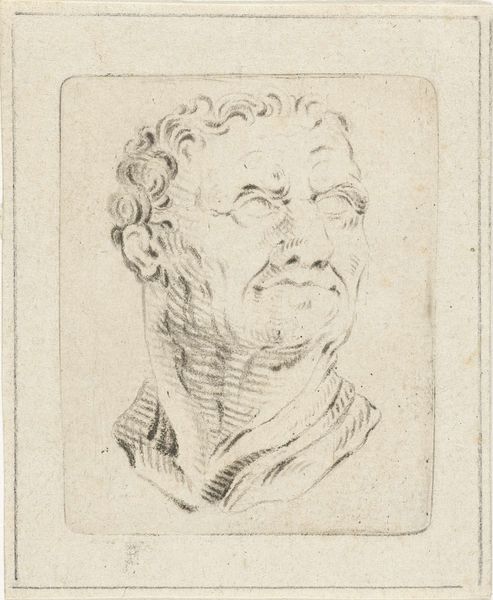
#
toned paper
#
light pencil work
#
pencil sketch
#
personal sketchbook
#
ink drawing experimentation
#
pen-ink sketch
#
sketchbook drawing
#
portrait drawing
#
watercolour illustration
#
sketchbook art
Dimensions: height 109 mm, width 96 mm
Copyright: Rijks Museum: Open Domain
Editor: We’re looking at “Portretkop van Romeins keizer, waarschijnlijk Nero,” a sketch likely by Peter Paul Rubens, dating back to between 1587 and 1640. It’s currently housed at the Rijksmuseum. The medium seems to be pen and ink on toned paper. I’m struck by the dynamism despite the classical subject matter, it’s not static at all. What draws your eye to this particular drawing? Curator: Immediately, the application of line seizes my attention. Notice how Rubens employs a nervous, almost vibrating line to delineate the contours of the face and laurel wreath. There’s a clear economy of means here. He's suggesting volume and form with minimal strokes. How does this linear approach affect your understanding of the subject? Editor: It makes the subject seem…alive? Like he’s capturing a fleeting moment rather than aiming for idealized perfection. It’s like an initial study, not the final statue. Curator: Precisely. And observe the limited tonal range. The umber ink, combined with the toned paper, establishes a subtle interplay of light and shadow. Where does the light seem to originate and what does this illuminate (literally and figuratively)? Editor: The light appears to come from above and slightly to the left, highlighting the brow and nose, casting shadows under the cheekbone and neck, adding depth and character. Curator: Note the strategic placement of hatching and cross-hatching, building up density in areas of shadow. The negative space is equally important, creating a sense of air and lightness. Are there particular passages of line work which you consider particularly expressive? Editor: I think the rendering of the hair, especially how it interacts with the wreath, shows a real freedom of line. It contrasts with the more deliberate strokes defining the face. It also helps set a playful mood of his potential madness. Curator: Indeed. Rubens masters use of light, shadow, and strategic strokes is incredible. It exemplifies how formal elements contribute to a dynamic portrayal, breathing life into what could have been a static depiction of imperial power. Editor: That interplay between freedom and control is fascinating; it makes me want to look at Rubens’ sketches more closely.
Comments
No comments
Be the first to comment and join the conversation on the ultimate creative platform.
